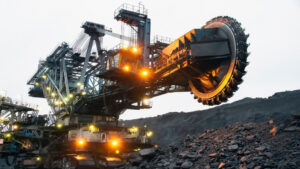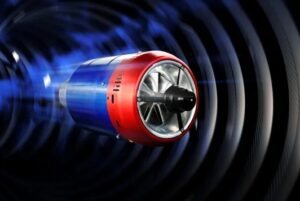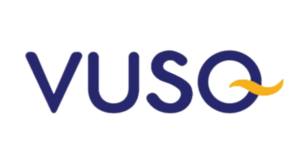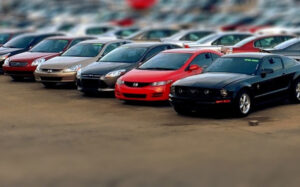
In January-October of this year, Ukraine reduced exports of titanium-containing ores and concentrates in physical terms by 95.2% compared to the same period last year, to 277 tons.
According to statistics released by the State Customs Service (SCS) on Wednesday, exports of titanium-containing ores and concentrates fell by 94.7% in monetary terms, to $496,000. The main exports were to Uzbekistan (35.61% of shipments in monetary terms), Turkey (35.01%), and Egypt (29.38%).
In addition, Ukraine imported 78 tons of titanium-containing ore worth $117,000 from China (98.29%, deliveries took place in January) and Kazakhstan (1.71%, deliveries took place in May) in the first 10 months of 2025.
During this period, Ukraine exported 2,466 tons of niobium, tantalum, vanadium, and zirconium ores and concentrates worth $3.954 million to Spain (48.90%), Germany (24.53%), and Italy (17.19%). At the same time, the country imported 417 tons of such ores worth $1.068 million from Spain (72.38%), the Czech Republic (12.73%), and China (12.45%).
As reported, in 2024, Ukraine reduced its exports of titanium-containing ores in physical terms by 37.5% compared to the previous year, to 7,284 thousand tons. In monetary terms, exports of titanium-containing ores and concentrate decreased by 40% to $11.654 million. The main exports were to Turkey (62.82% of supplies in monetary terms), Egypt (7.38%), and Poland (6.93%).
Last year, Ukraine imported 314 tons of titanium-containing ore worth $492 thousand from China (87.78%), Vietnam (6.11%), and Senegal (also 6.11%).
At the same time, experts pointed out the inconsistency of statistics on exports of titanium-containing ores. However, in response to a request from Interfax-Ukraine, the State Customs Service (SFS) of Ukraine stated that complete data on the export of titanium raw materials is not provided due to restrictions on the volume of export and import operations with military and dual-use goods, which are reflected in aggregate form under “Other goods.” They explained that, in particular, deliveries of titanium-containing ores from companies differ from the SCS data.
“We would like to inform you that these deliveries are included in the statistical exports from Ukraine, but are not reflected in the foreign trade statistics published by the State Customs Service (…) under commodity item UKTZED 2614 ”Titanium ores and concentrates” in view of the following (…) In accordance with the provisions (…), when protecting data for confidentiality purposes, any information considered confidential is reported in full at the next, higher level of product data aggregation,” the State Customs Service explained in its response to the agency.
It was clarified that information on customs clearance and movement across the customs border of Ukraine of goods subject to export control is included in the list of information containing official information in the SSU, in accordance with the relevant order.
In Ukraine, titanium-containing ores are currently mined mainly by PJSC “United Mining and Chemical Company” (UMCC), which manages the Vilnohirsk Mining and Metallurgical Plant (VGMK, Dnipropetrovsk region) and the Irshansk Mining and Processing Plant (IGZK, Zhytomyr region), as well as LLC “Mezhirichensky GZK” and LLC “Valky-Ilmenite” (both LLCs are located in Irshansk, Zhytomyr region). In addition, the production and commercial firm Velta (Dnipro) built a mining and processing plant at the Birzulivskyi deposit with a capacity of 240,000 tons of ilmenite concentrate per year.

According to Serbian Economist, Michal Strnad’s Czech defense and industrial holding company Czechoslovak Group (CSG) has acquired a controlling stake in Belgrade-based Mechatronics Unmanned Systems & Technology Solutions (MUST Solutions), which manufactures power plants and components for drones.
According to sources, the purchase was made through a new subsidiary, AviaNera Technologies: CSG acquired 51% of the shares from the company’s founder, Vladimir Yazarevic; the amount is undisclosed. MUST specializes in the development and production of compact turbojet and other propulsion solutions for UAS (propulsion systems), which expands CSG’s portfolio in the unmanned systems segment.
CSG notes that the asset will deepen the holding’s expertise in high-tech UAV subsystems and integrate the Serbian development base into the European supply chain.
CSG is one of the largest private defense and industrial holdings in Central Europe (Tatra Trucks, Fiocchi Munizioni, etc.), actively expanding through M&A; its owner is Michal Strnad, who was named the richest Czech in 2025 by a number of ratings. According to Forbes/Bloomberg, the growth took place against the backdrop of increased demand for weapons and ammunition; the group is expanding its presence in Europe and the US.
MUST Solutions (Belgrade) is an engineering company specializing in power plants and components for UAVs; after the deal, control (51%) passed to CSG (through AviaNera), while founder Vladimir Yazarevich retained his stake. The company is known for developing small jet and other engines for UAS.
Source: https://t.me/relocationrs/1749

At a meeting to be held from November 27 to December 4, shareholders of IC “VUSO” (Kyiv) plan to decide on the allocation of UAH 20.013 million of confirmed undistributed profit for 2024 to dividend payments.
As reported by the company in the information disclosure system of the National Securities and Stock Market Commission (NSSMC), the remaining profit for 2024 in the amount of UAH 98.811 million is planned to be left undistributed.
The company also reports that the net confirmed undistributed profit for 2024 amounts to UAH 118.824 million.
The agenda of the meeting states that dividends will be paid at a rate of UAH 0.73 per share. Dividends will be paid in full directly to shareholders in accordance with the procedure established by law within six months from the date of the relevant decision by the general meeting of shareholders.
VUSO Insurance Company was founded in 2001. It is a member of the Motor Transport Insurance Bureau of Ukraine and the Ukrainian Financial Services Association, a participant in the Agreement on Direct Settlement of Claims, and a member of the Nuclear Insurance Pool.
In 2024, the company collected UAH 3.462 billion in gross premiums, which is 29.3% more than in 2023, the company’s net premiums increased by 25.55% to UAH 3.105 billion, and net earned premiums increased by 15.83% to UAH 2.737 billion.
In 2024, VUSO Insurance Company paid out UAH 1.414 billion to its clients, which is 45.40% higher than the amount of insurance payments and reimbursements in 2023. Thus, the payout ratio increased by 4.52 percentage points (pp) to 40.85%.
As of January 1, 2025, the insurer’s assets increased by 25.76% to UAH 1.917 billion, equity capital by 22.45% to UAH 755.839 million, liabilities increased by 28.01% to UAH 1.161 billion, cash and cash equivalents increased by 36.09% to UAH 758.730 million.

The volume of passenger car imports to Ukraine, including cargo-passenger vans and racing cars (UKT ZED code 8703), in January-October 2025 amounted to almost $4.82 billion, which is 32.6% more than in the same period of 2024 ($3.63 billion) and 10% more than in the whole of 2024.
According to statistics released by the State Customs Service of Ukraine, the growth rate of passenger car imports has thus accelerated, reaching 27.4% in the first nine months of the year compared to the same period in 2024.
In October this year, passenger cars worth $647.8 million were imported into Ukraine, which is 81% more than in October last year.
The top three suppliers of cars to Ukraine in January-October this year were Germany, the US, and China, while last year they were the US, Germany, and Japan. In particular, car deliveries from Germany increased by 52% to $841.3 million, and their share in the structure of car imports was 17.45% compared to 15.23% a year earlier.
Cars worth $839.7 million (25.4% more) were imported from the US to Ukraine, and $663 million (13.8% of passenger car imports) from China. Last year, imports from Japan, which was among the top three leaders, amounted to almost $430 million (11.8%).
Imports of passenger cars from other countries during the period amounted to $2.476 billion, compared to $1.981 billion in January-October 2024.
At the same time, in the first 10 months of this year, Ukraine exported only $7.17 million worth of such vehicles, in particular to the UAE, Canada, and the US, while a year ago, during the same period, the country supplied $9.33 million worth of such vehicles to foreign markets, mainly to Canada, Germany, and the US.
According to the State Customs Service, in the overall structure of imports of goods to Ukraine in January-October 2025, the share of passenger cars was 7.1% (6.3% last year), and in the structure of exports – 0.02% (0.03%).
As reported, in 2024, passenger cars worth $4.385 billion were imported into Ukraine, which is 8% more than a year earlier, and $10.1 million worth were exported (2.7 times less).

In January-October 2025, Ukraine increased imports of aluminum and aluminum products by 14.8% to $432.08 million, while exports grew by 21.4% to $128.14 million.
In October, aluminum imports amounted to $42.85 million, and exports amounted to $15.71 million.
For comparison, in 2024, aluminum imports increased by 21.7% to $446 million, and in 2023, by 7.7% to $366 million.
Aluminum is widely used as a structural material. The main advantages of aluminum are its lightness, malleability, corrosion resistance, high thermal conductivity, and the non-toxicity of its compounds.
In particular, these properties have made aluminum extremely popular in the production of kitchenware, aluminum foil in the food industry, and for packaging. The first three properties have made aluminum the main raw material in the aviation and aerospace industries (recently, it has been replaced by composite materials, primarily carbon fiber). After construction and packaging production—aluminum cans and foil—the largest consumer of metal is the energy industry.

The Cabinet of Ministers of Ukraine has included the Korosten-Podilsky project, with a total area of 78.0236 hectares in the city of Korosten, in the Register of Industrial Parks. The project was initiated by the city council, according to the Ministry of Economy. According to the concept, the park will house woodworking, textile, metal products, and machine-building enterprises, as well as other non-metallic mineral products, machinery and equipment, concrete products, bricks, construction mixtures, and the development of activities in the field of information and electronic communications.
The creation of the park is expected to provide 2,300–4,000 new jobs in the manufacturing industry. To attract investment, the Korosten City Council adopted a Comprehensive Community Economic Development Program for 2025–2027. The program provides for the promotion of the functioning and development of industrial parks in the amount of UAH 150 million and the development of design and estimate documentation for the park’s engineering and transport infrastructure in the amount of UAH 2.5 million.
The term for the creation of the park is 30 years. The decision was adopted on the evening of November 13. Taking this decision into account, there are 109 industrial parks in the Register.
CABINET OF MINISTERS, INDUSTRIAL PARK, Korosten-Podilskyi, REGISTER